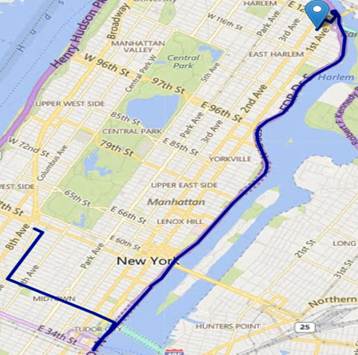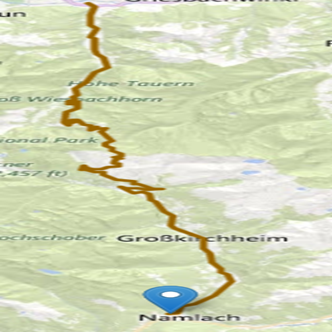Settings
The Settings tab allows you to control the way routes are calculated. Each of the settings affect the output of route. The following table describes the available settings (parameters) and their usability.
| Parameter | Description |
| Database | Specifies the name of the database that contains the data to use in the search process. Use a valid routing database resource name defined in the Resources section of Management Console. For more information, see Creating a Routing Database Resource. |
| Optimize by |
Specifies whether Matrix should find the shortest distance or the shortest time route from the start to end point. The options are:
|
| Historic traffic time bucket | Specifies whether the routing calculation uses the historic traffic speeds. These speeds are based on different time-of-day buckets. The data must have historic traffic speeds included in order to use this feature. The data for each country and region has the same bucket definitions, where the speeds for these bucket values may vary. The options are: None Specifies that no historic traffic data is used in the calculation. Instead an averaged speed value is used. This is the default value. AMPeak Calculates routes with the peak AM speeds. The AMPeak time bucket is from 07:00 to 10:00 hours. PMPeak Calculates routes with the peak PM speeds. The PMPeak time bucket is from 16:00 to 19:00 hours. Off-PeakCalculates routes with the off peak (daytime) speeds. The OffPeak time bucket is from 10:00 to 16:00 hours. Night Calculates routes with the nighttime speeds. The Night time bucket is from 22:00 to 04:00 hours. |
| Use major roads for calculation |
Specifies whether to include all roads in the calculation or just major roads. If you choose to include only major roads, performance will improve but accuracy may decrease. The following map represents a route with travel allowed on all roads:
The following map represents the same route with travel restricted to major roads only:
|
| AvoidTollRoads | Specifies whether to include a tol road or not while calculating the route. This is a
Boolean parameter. If you set the value of
AvoidTollRoads to True, the response contains a
route without any toll roads. If the value of
AvoidTollRoads is set to False, the route includes
toll roads. It can be overridden from the input as well. The default is
False.
Now, for the same points, if you check the toll Road or set the AvoidTollRoads parameter as True from the input, the response contains a route without any toll roads. See the following response:
|
| ReturnOptimalRoutes | Specifies whether to return only the optimized route for each start point or end point combinations. The optimized route is either the fastest route or the shortest distance, depending on the optimizeBy parameter. The default is True. |
| Local Roads Load Factor |
Specifies the impact of loading of minor or local roads at the time of route or matrix calculations. The number of roads that can load is directly proportional to the value selected in the parameter where 1 is the minimum and 3 is the maximum value. Valid values can be 1,2, or 3. The default value is 1. See Local Roads Load Factor for a detailed description and impact of the parameter on routing or matrix calculation. Note: The parameter does not accept decimal values.
|



